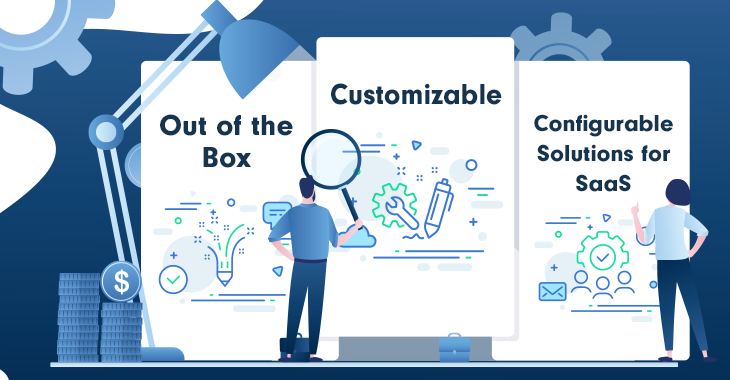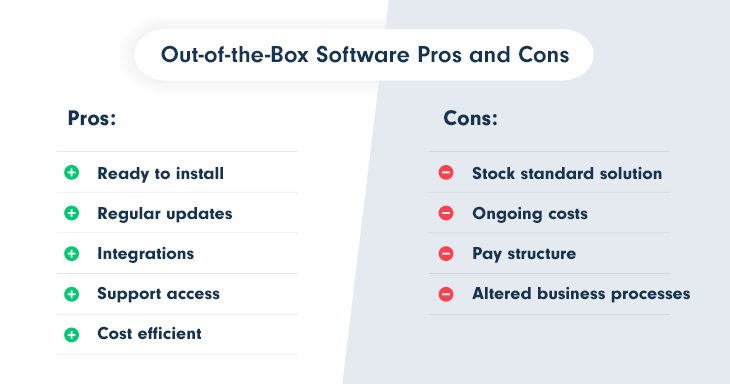Out-of-the-Box vs. Customizable vs. Configurable Solutions for SaaS
The B2B payments sector in the United States is set for continued growth in 2022, with transaction volumes predicted to reach $28.611 trillion this year. Payment providers are expected to capitalize on this incredible momentum as numerous new solutions make their way into the entire industry.
Aside from partnering with the right provider, selecting the best software systems for your SaaS business means deciding between an out-of-the-box, customizable, or configurable platform. The first thing to consider is your organization's growth, development costs and path, processes, and overall expenses. Because ultimately, the solution you choose must align with the unique needs of your business.
Let's unpack each of these options, examine their pros and cons, and discover how you might make an informed decision and find the perfect fit solution for your organization in the long run.

Defining Out-of-the-Box Software Solutions
Out-of-the-box software provides ready-to-implement shelf software that caters to a broad market base ready to handle business processes. It is typically easily installed as it is designed by the manufacturer with little to no changes to user experience and behavior when integrating.
This software type's properties, components, pre-designed templates, and workflows are developed to suit most users. The vendor regularly updates out-of-the-box software with new features and functionality.
Out-of-the-Box Software Examples
Many out-of-the-box software solutions are available to accommodate various business requirements, including payments, customer service, marketing, operations, website development, analytics, and communications.
As a SaaS provider, you might prefer an out-of-the-box solution, for example, regarding your payment gateway technology. Giving eCommerce platforms the ability to process transactions securely, this software can be particularly complex to develop yourself.

5 Out-of-the-Box Software Pros
- Ready to install: As the name suggests, these solutions can be quickly installed and implemented across your organization.
- Regular updates: The developers are constantly improving on and adding new features to the software, and these updates are regularly shared with users. Sometimes new functionality is driven by user requests and developed with specific customers.
- Integrations: Software integrations are readily available to connect your solution to other platforms and easily create a single, unified system.
- Support access: Out-of-the-box solutions are usually accompanied by customer support platforms to assist you should any issues or questions arise.
4 Out-of-the-Box Software Cons
- Stock standard solution: Out-of-the-box software is limited by pre-defined settings, so it is not designed specifically to meet your business's needs.
- Ongoing costs: The vendor may charge recurring subscription or licensing fees, and upgrades and support might come at an additional cost.
- Pay structure: You may need to pay per user, which can become costly as your business grows.
- Altered business processes: It might require switching up your processes to function within the requirements of the software.

When To Opt for an Out-of-the-Box Solution
Businesses with a small IT team will find out-of-the-box solutions most beneficial as they require very little technical know-how. They are also ideal if you have a modest budget, as software development can be expensive, ranging from $3,000 to $120,000 per project.
Deploying a widely used, out-of-the-box solution makes sense if your customer base has standardized needs. In this case, investing in customized software wouldn’t give you a competitive advantage.
Ready-to-use software is also useful when you need a quick solution, as it can be implemented without a long and painful process. However, be sure to acquire a platform that meets most of your specific business needs and can be scaled as you scale, saving you time and money.
Defining Customizable Solutions
Customized solutions allow you to offer tailored user experiences by modifying or adding to existing code, resulting in fundamental changes to the core software. This approach is usually required when you need a solution to a current problem or desire functionality that doesn’t yet exist.
If a vendor doesn’t offer customization, you'll need a highly skilled development team to write the code for any special modifications or to develop entirely new features and functions. Building a solid team, however, isn’t simple, with more than 13% of IT companies acknowledging it as a challenge.
Customization Examples
Each SaaS company offers unique solutions, so you may require customizable eCommerce software that can be aligned to the services you provide and the way you do business.
A customized payment system, for instance, allows for:
- Tailored payment processing forms
- Payment gateway integrations
- Custom pricing
While a unique CRM system means you can customize and work directly on how you track customer interactions, offer support, and store prospect data.
Read on to learn the pros and cons of custom development and software configuration on PayPro Global’s Blog.
